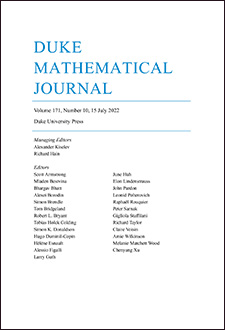Abstract
For a compact -manifold with arbitrary (possibly empty) boundary, we give a parameterization of the set of conjugacy classes of boundary-unipotent representations of into . Our parameterization uses Ptolemy coordinates, which are inspired by coordinates on higher Teichmüller spaces due to Fock and Goncharov. We show that a boundary-unipotent representation determines an element in Neumann’s extended Bloch group , and we use this to obtain an efficient formula for the Cheeger–Chern–Simons invariant, and, in particular, for the volume. Computations for the census manifolds show that boundary-unipotent representations are abundant, and numerical comparisons with census volumes suggest that the volume of a representation is an integral linear combination of volumes of hyperbolic -manifolds. This is in agreement with a conjecture of Walter Neumann, stating that the Bloch group is generated by hyperbolic manifolds.
Citation
Stavros Garoufalidis. Dylan P. Thurston. Christian K. Zickert. "The complex volume of -representations of 3-manifolds." Duke Math. J. 164 (11) 2099 - 2160, 15 August 2015. https://doi.org/10.1215/00127094-3121185
Information





